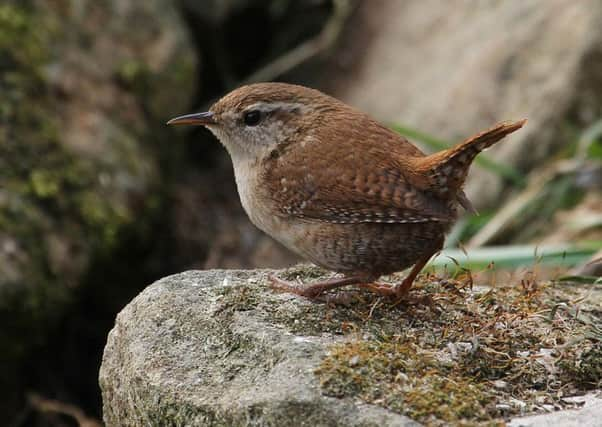Country & Coast: Hardy wrens are survivors of an elaborate festive ritual


I have seen wrens on all of Yorkshire’s Three Peaks - Ingleborough, Whernside and Phen-y-ghent - and recently heard its loud string of notes carried on a bitter wind that was blowing across the bleak moorland above Top Withins to the west of Haworth.
A few miles away, across the Lancashire border, the diminutive bird is still sometimes called the stumpit in view of its short tail.
Advertisement
Hide AdAdvertisement
Hide AdIn Yorkshire it is widely known as the jenny wren, and people in the Craven area of the Yorkshire Dales have somewhat confusingly given it the nickname of tom tit.
The attraction which wrens have for our wild landscapes is simply the large numbers of drystone walls, for the bird’s natural habitat is the crevice and it does not seem to matter whether it is in a garden wall or the one that runs across the top of Whernside.
The bird’s scientific name is Troglodytes and this means cave-dweller, and walls - especially those with missing stones - are microcosms of cave systems, and it is where they find their main diet of sheltering insects and spiders.
Wrens have a long association with Christmas, although it is pictures of robins which festoon mantlepieces and sideboards.
Advertisement
Hide AdAdvertisement
Hide AdSadly, the wren’s fate hasn’t been to caricature yuletide good cheer like the robin but to be hunted on Boxing Day, a tradition which has died out in England but apparently still continues - though without harming wrens - in the west of Ireland.
A folk song about “wrenning” was known in the East Riding, and the tradition seems to have involved an elaborate ritual. Families put on fancy dress and went out to beat hedgerows - walls are less common over there - until they managed to catch a wren. How they did that isn’t clear, given that the bird is small and extremely agile. But any poor bird that was caught was fastened to a pole or put in a cage draped with holly, ivy and ribbons and paraded around local houses.
It was the role of boys to sing an old song about the wren being “the king of all birds” which finished: “Although he is little, his family’s great, I pray you, good landlady, give us a treat.” If they were lucky, the boys were given food and drink and in return they gave feathers from the bird, which were supposed to bring luck.
But why the wren, and why Boxing Day?
The answer may well be in a legend associated with the bird - that it was a wren which alerted guards to the attempted escape of St Stephen when he was imprisoned. He was the first Christian martyr, having been found guilty of blasphemy, and was stoned to death after the wren had thwarted his escape. His reward was to have his name associated with the day after Christ’s birth.